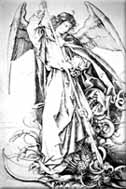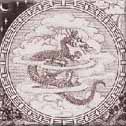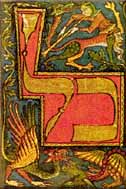|
|
| There is a visual / mythic record of this social transition. Indigenous peoples on six continents, people hypothesized to have been more and less matrilineally organized until the arrival of the men on horses, believed in the Great Serpent and a host of additional creatures associated with the Goddess. When the warriors on horses arrived, serpent worhippers had their gods and goddesses demonized by the winners, the makers of history, the creators of surviving myths. Across the Europe and Asia, the serpent made a transition into the dragon. Sometimes its not possible to determine cause, or even come up with a reasonable explanation. Sometimes all we can do is note that a thing occurred and what the effects were. Somehow, in the West, the serpent and most of what the serpent represented, was made the enemy, and the demonized serpent - the dragon - represented what was to be despised and destroyed. Focus was on the destruction of the beast and what the beast represented. Art reflected this cultural obsession. And in the West, art often became about the forces that were the barrier between life in the present, and the sacred that is somewhere else. Over the last 100 years, Western art has further diverged to the point where the sacred seems almost irrelevant as the artist focuses on his or her internal state and how that state is represented. And so now, in the 20 & 21st centuries, what specificly is represented is the barrier itself, as if the sacred does not exist. |
|
This issue Home | Arts | Comics | Culture | Music | Science | Spirituality
|
|
Dragons: Eastern, Western and in between |




